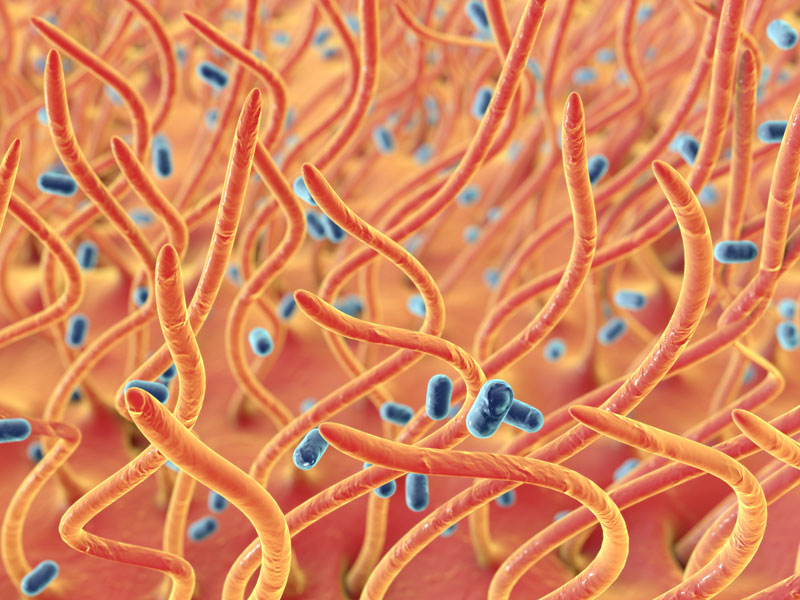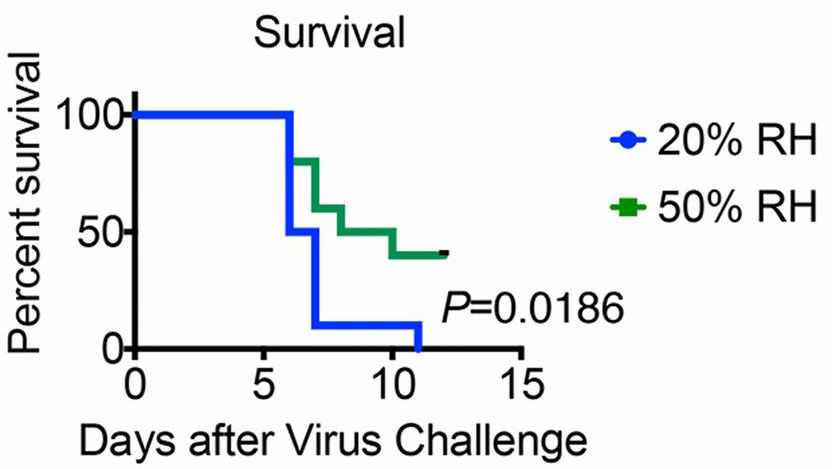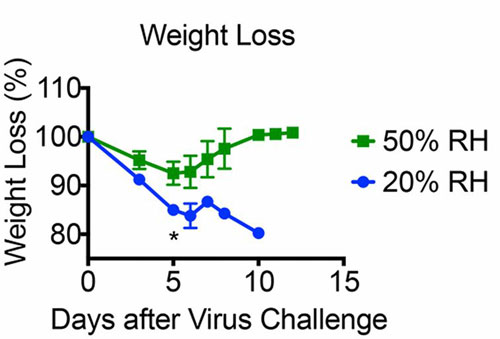Published: May 2019 | DOI: 10.1073/pnas.1902840116
Low ambient humidity impairs barrier function and innate resistance against influenza infection
Eriko Kudo, Eric Song, Laura Yockey, Tasfia Rakib, Patrick Wong, Robert Homer, Akiko Iwasaki
Summary
This study set out to understand the impact of low humidity on the immune system's defences against the Influenza virus. Genetically modified mice, which resist flu infection in a similar way to humans, were used to test the effects of humidity, at either 10 or 20%RH compared to 50%RH, on flu infection.
The mice were pre-conditioned in an environmental chamber at 20°C and either the low or normal humidity. They were then infected with the flu virus and returned to the environmental chamber for a set period of time.
The mice were studied for their physical reactions to the virus, including temperature, weight, viral load in the respiratory system and ultimately their mortality to the virus.
The study found that mice housed at 20%RH suffered a worse disease course compared to those kept at 50%RH, with more rapid and greater weight loss, drop in body temperature and shortened survival. In fact, whereas all mice at the lower humidity died within 11 days of infection, of those that experienced 50%RH, just under half survived until the end of the experiment.
The research showed that low humidity negatively impacts the immune system's defence against the flu virus in three ways. It stops the effective operation of cilia, which are tiny hair-like structures in our airways, from the trachea down into the lungs, that work to remove pollutants. Secondly, it inhibits the ability of cells in the lungs damaged by the flu virus to repair themselves. Lastly, the study indicated that low humidity caused a failure of signalling interferons released by infected cells to alert neighbouring cells to the virus, and thus fight its spread.
The study offers insight into why the flu is more prevalent when the air is dry. “It’s well known that where humidity drops, a spike in flu incidence and mortality occurs. If our findings in mice hold up in humans, our study provides a possible mechanism underlying this seasonal nature of flu disease,” said Iwasaki.
While the researchers emphasized that humidity is not the only factor in flu outbreaks, it is an important one that should be considered during the winter season. Increasing water vapor in the air with humidifiers at home, school, work, and even hospital environments is a potential strategy to reduce flu symptoms and speed recovery, they said.






